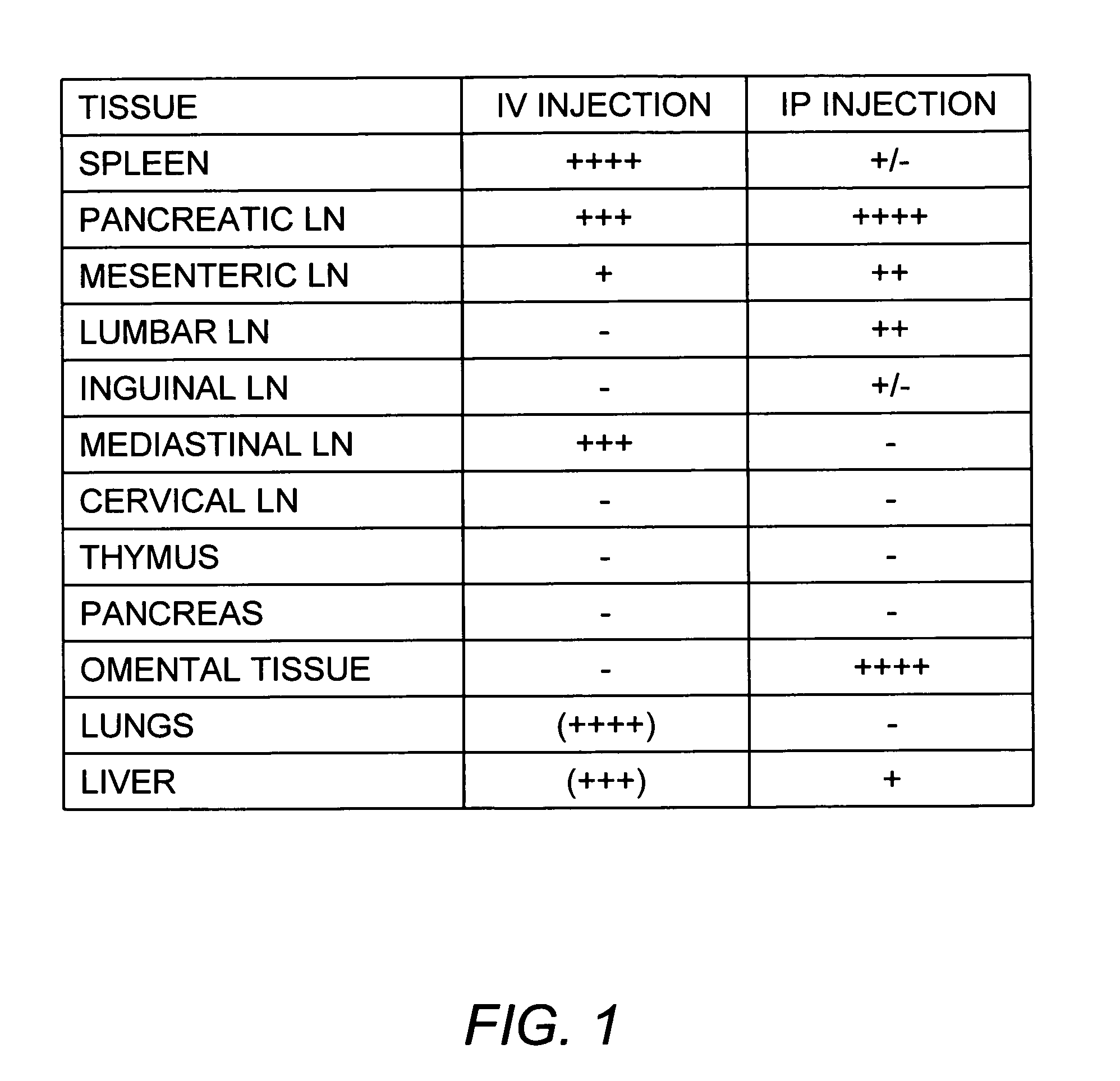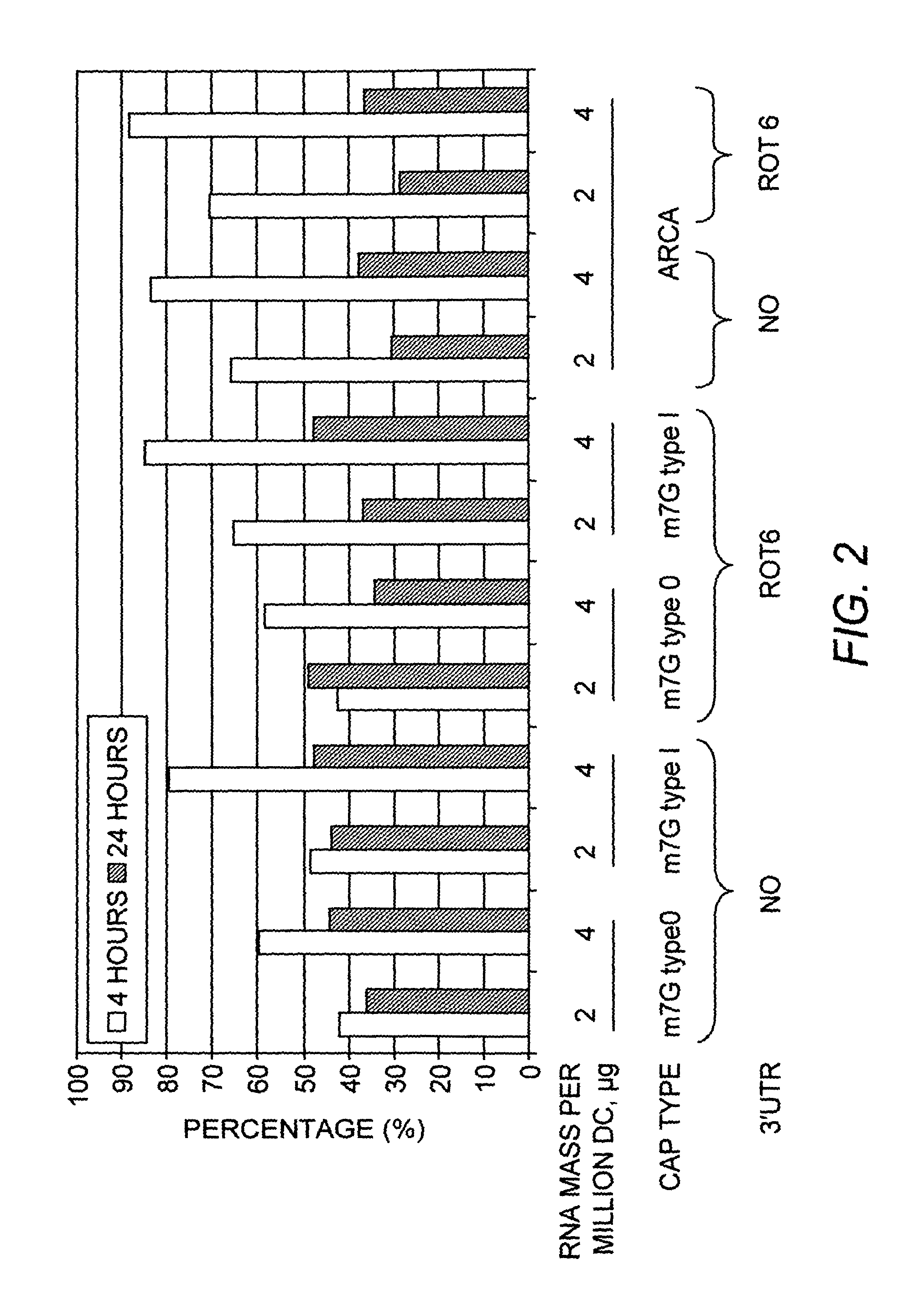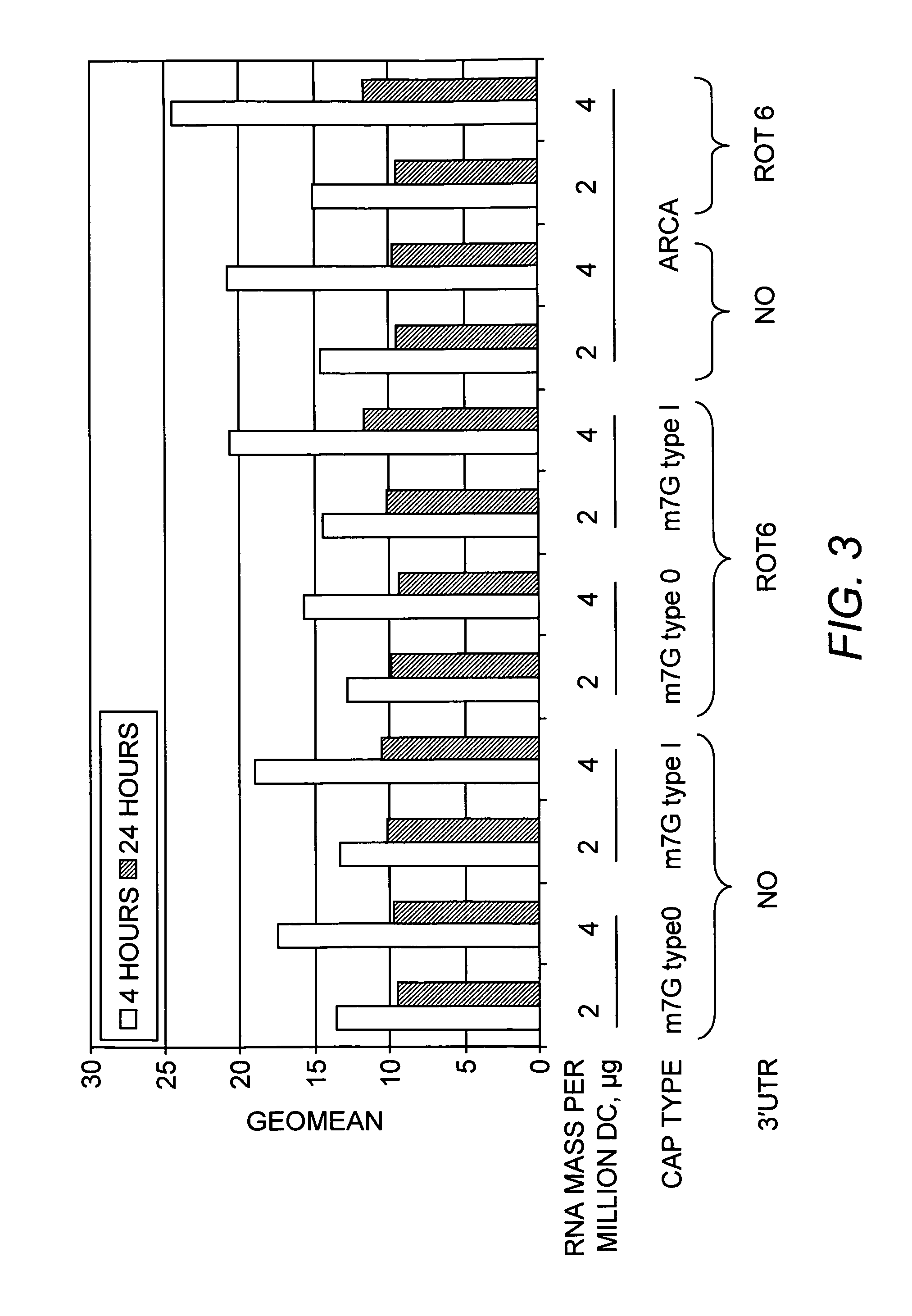Transient expression of immunomodulatory polypeptides for the prevention and treatment of autoimmune disease, allergy and transplant rejection
a technology of immunomodulatory polypeptides and transient expression, applied in the direction of immunological disorders, drug compositions, cell culture active agents, etc., can solve the problems of lack of progression to overt clinical symptoms, affecting the survival rate of patients, so as to reduce the incidence of dysfunction or undesired immune response, and the effect of sustained delivery of immunomodulatory compounds
- Summary
- Abstract
- Description
- Claims
- Application Information
AI Technical Summary
Benefits of technology
Problems solved by technology
Method used
Image
Examples
example 1
Effect of Route of Administration on Biodistribution of Murine Bone Marrow-Derived DCs
[0115]Bone marrow derived murine DCs were either transduced to express a GFP-luciferase fusion protein (as described in Creusot et al. (2008) Clin. Immunol. 127:176-187) or obtained from 10-12 week old luciferase-transgenic mice. Briefly, bone marrow derived murine DCs were prepared as follows. Bone marrow cells were obtained from the tibia, femur and pelvis of 8-10 week old female donor mice, after crushing with a mortar and pestle (under sterile conditions) and Ficoll separation (Histopaque-1119). Recovery was approximately 70×106 cells per mouse. Following red blood cell lysis, bone marrow cells were depleted of T cells, B cells and granulocytes cells by AutoMACS™ (Miltenyi) negative selection using biotinylated anti-CD3+, anti-B220+, anti-Gr-1+ (eBioscience) and anti-biotin microbeads (Miltenyi). The remaining bone marrow cells (˜10% of original count) were plated in 6-well plates (2×106 cells / ...
example 2
Optimization of IL-4 RNA for Expression in Human Dendritic Cells
[0118]The murine IL-4 cDNA, either with or without the addition of the 3′ UTR of the simian rotavirus gene 6 downstream of the IL-4 coding sequence, was inserted in into a plasmid vector designed for in vitro transcription from a T7 promoter. The sequence and features of the vector are shown in SEQ ID NO:1. Nucleotides 2487-2506 of SEQ ID NO:1 correspond to the T7 promoter. Nucleotides 2551-2970 of SEQ ID NO:1 corresponds to the mIL-4 coding sequence, and SEQ ID NO:2 corresponds to the mIL-4 protein. Nucleotides 2983-03121 of SEQ ID NO:1 corresponds to the Rotavirus gene 6 3′ UTR element. Nucleotides 3128-3191 of SEQ ID NO:1 corresponds to an oligo T stretch. mRNA, was synthesized by in vitro transcription (IVT) of the linearized plasmid shown in using mMessage mMachine™ T7 Ultra kits (Ambion) following the manufacturer's directions. The RNA was capped according to the manufacturer's (Epicenter Biotechnologies) directio...
example 3
Transduction of Murine Dendritic Cells with Lentiviral IL-4 Constructs
[0124]Nucleic acid encoding murine IL-4 and GFP were subcloned into the lentiviral vector described by Breckpot et al. (Journal of Gene Medicine, 2003, 5(8) 654-67). Bone marrow derived murine dendritic cells were prepared as described in Example 2 through the third day of differentiation. On day 4 of culture as described above, murine dendritic cells were infected with lentiviral particles (multiplicity of infection of 15) expressing IL-4 and GFP (on a bicistronic mRNA) in the presence of 10 μg / ml protamine sulfate (Sigma). After 16-24 hours incubation with virus, the medium was changed. DCs were collected on day 6 and resuspended in PBS for administration to NOD mice.
PUM
 Login to View More
Login to View More Abstract
Description
Claims
Application Information
 Login to View More
Login to View More - R&D
- Intellectual Property
- Life Sciences
- Materials
- Tech Scout
- Unparalleled Data Quality
- Higher Quality Content
- 60% Fewer Hallucinations
Browse by: Latest US Patents, China's latest patents, Technical Efficacy Thesaurus, Application Domain, Technology Topic, Popular Technical Reports.
© 2025 PatSnap. All rights reserved.Legal|Privacy policy|Modern Slavery Act Transparency Statement|Sitemap|About US| Contact US: help@patsnap.com



